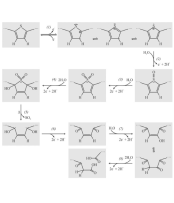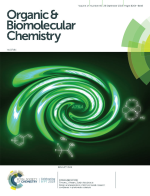
Structural Changes During the Overoxidation of Poly(3,4-Ethylenedioxythiophene) Films Electrodeposited from Surfactant-Free Aqueous Solutions
The book chapter authored by
G.G. Láng,
V. Kondratiev,
M. Ujvári,
S. Vesztergom,
K. Szekeres and
D. Zalka
is published in K. Wandelt (ed): Encyclopedia of Interfacial Chemistry, 2018, pp. 258–270.
Abstract:
Inherently conducting polymers have been of great interest to scientists since the initial discovery of polymers with metal-type conductivities, and this is currently one of the most active areas of research in polymer science and engineering. Conducting polymers are attractive materials for use in a variety of applications that require materials which are both electrically conducting and mechanically compliant. It is known that poly(3,4-ethylenedioxythiophene), often abbreviated as PEDOT, is relatively stable compared to other conducting polymers. The electropolymerization of 3,4-ethylenedioxythiophene is usually carried out in organic solvents due to the low solubility of the monomer in water. However, since organic solvents are often harmful to health and uneconomical compared to water, there is a growing interest in the preparation of PEDOT films in aqueous media. In the present study, the most important electrodeposition methods for the preparation of PEDOT films in surfactant-free aqueous media are summarized. It is obvious that the stability of polymer films is of great importance for their practical application. For this reason, results of recent studies on the electrochemical stability and degradation properties of PEDOT films electrodeposited from aqueous solutions are summarized, with particular emphasis on the structural changes induced by overoxidation and oxidative (electrochemical) degradation. Experimental techniques suitable for monitoring the degradation process have been discussed, and the morphological changes in PEDOT films during overoxidation have been analyzed. Overoxidation mechanisms proposed in the literature have been surveyed.
